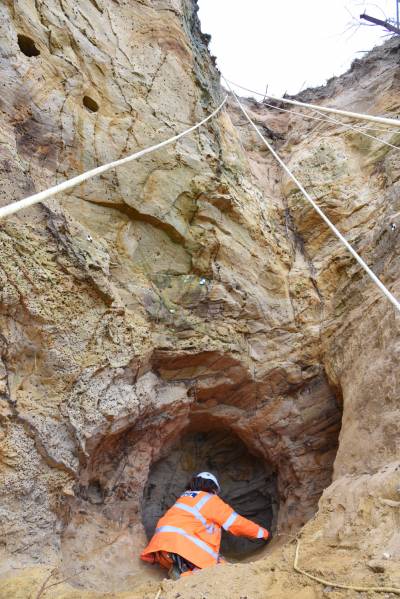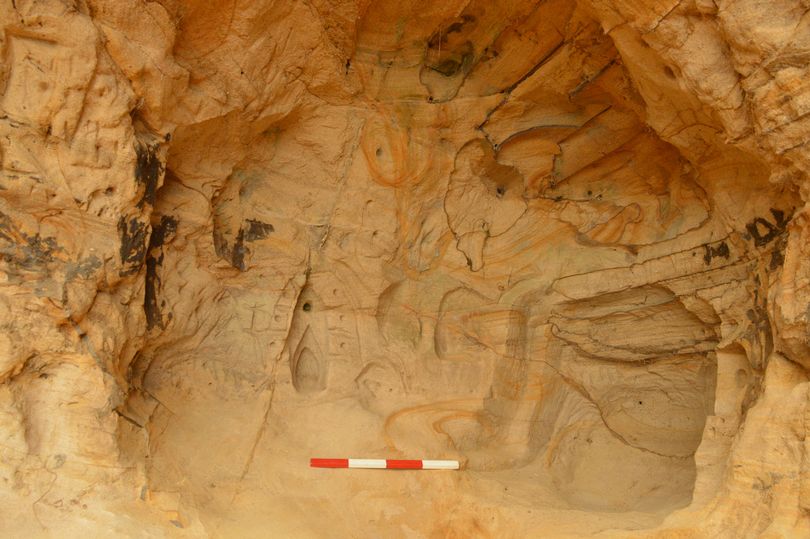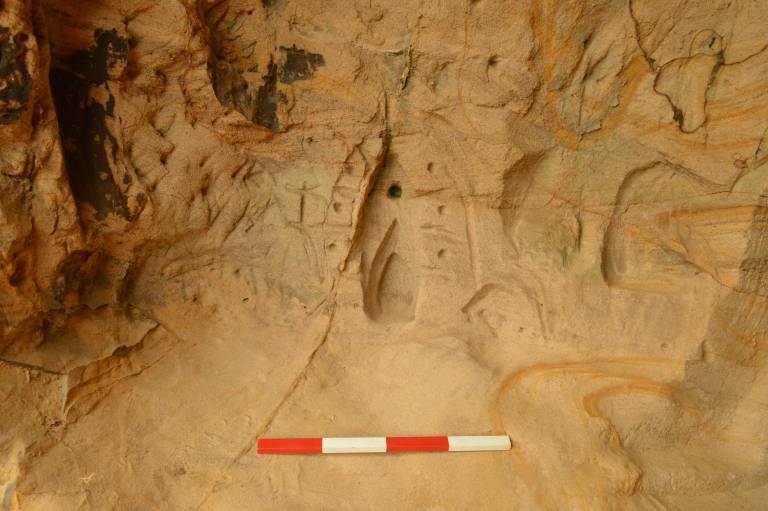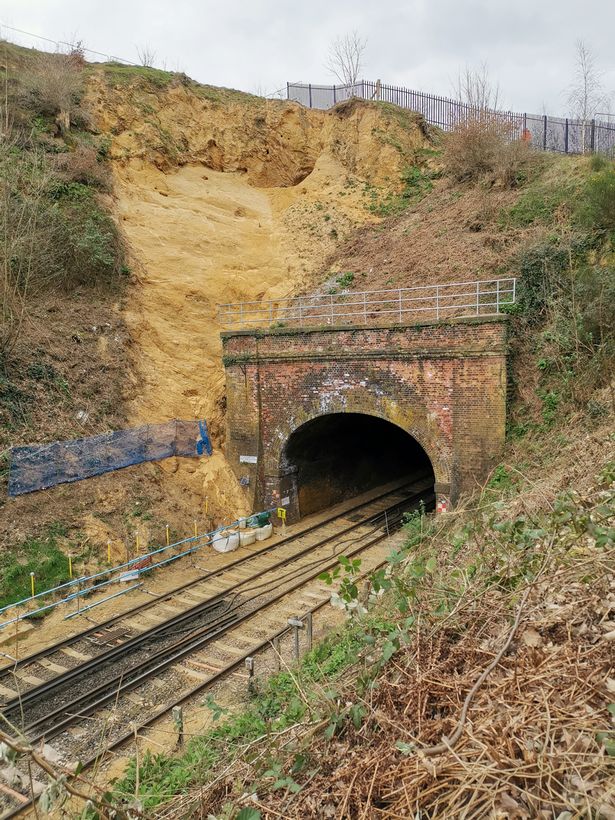Railway Workers discover a 14th-century cave with medieval shrine or hermitage
An archaeologist’s team from Archaeology -Southeast, a member of the UCL Institute of Archeology, explored a small cave with medieval carvings believed to have been dated the 14th century.


The finding followed a landslip in the area of Guildford in Surrey and is considered to be a medieval shrine or hermitage, with links to the nearby church of St Catherine.
Engineers came across the small cave, with markings and evidence of use in the 14th century, while stabilizing the embankment between the railway line and the A3100 Old Portsmouth Road.
The sandstone cave is made up of several sections ranging from 0.3 meters to about 0.7 meters high and it’s thought to be the surviving section of a much bigger cave.
The rest may have been lost when the railway line was carved out of the hillside in the early 1840s.
Initial findings by a specialist archaeological contractor suggest that it was a later medieval shrine or hermitage associated with the early 14th century chapel of St Catherine, the ruins of which are situated on the hill nearby.
It may even have earlier origins as a site of cult activity, due to its pre-14th century name of Drakehull, or ‘Hill of the Dragon’. Images taken from the site show the presence of a Gothic niche decorated in dots with a Calvery cross nearby.

There are seven or eight further niches and experts found considerable evidence of writing and other markings across the cave ceiling.
The cave is partially covered in deposits of black dust, believed to be soot from lamps. The remains of two suspected fire pits were also uncovered in the cave floor.

The hope is that radiocarbon dating can be used to establish the period when the cave was in use.
Mark Killick, Network Rail Wessex route director, said: “This is an unexpected and fascinating discovery that helps to visualize and understand the rich history of the area.
“A full and detailed record of the cave has been made and every effort will be made to preserve elements where possible during the regrading of the delicate and vulnerable sandstone cutting.”
Tony Howe, a historic environment planning manager and county archaeologist at Surrey County Council, added: “The discovery of this cavern is tremendously exciting. It’s very early in the process of understanding its full significance, but the potential for knowledge acquisition is huge.
“We’re looking forward to learning an awful lot more about the site as studies progress.”





